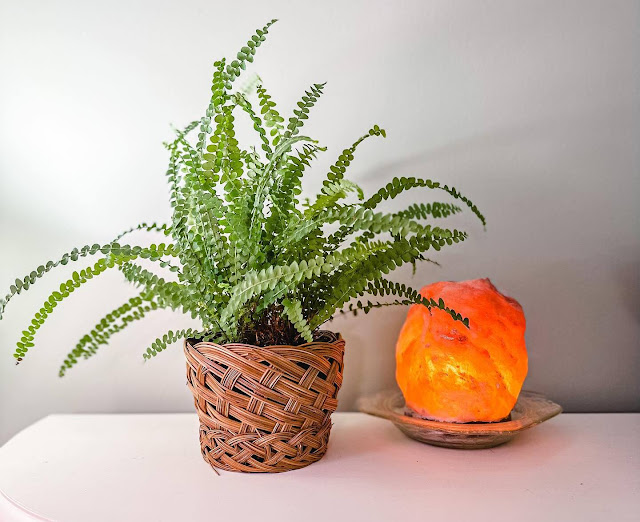Lemon Button Fern Care: A Comprehensive Guide
The Lemon Button Fern, also known as Nephrolepis cordifolia 'Duffii,' is a small and delicate-looking fern that is native to tropical regions of Asia. It's a cultivar of the Nephrolepis cordifolia species, also known as the heart-shaped sword fern.
This fern is characterized by its small, delicate, and finely divided fronds that are arranged in a rosette pattern, giving it a soft, lacy appearance. The Lemon Button Fern is a popular indoor plant due to its easy care, air-purifying properties, and unique lemon scent.
It can thrive in low light conditions and prefers well-drained soil. It is not considered toxic to cats or dogs and can be a great addition to your indoor plant collection.
General information about the Plant
The Lemon Button Fern is a small and delicate-looking fern native to tropical regions of Asia. It is a cultivar of the Nephrolepis cordifolia species, also known as the heart-shaped sword fern. This fern is characterized by its small, delicate, and finely divided fronds that are arranged in a rosette pattern, giving it a soft, lacy appearance.
Characteristics and Appearance
The Lemon Button Fern has small, delicate, and finely divided fronds that are arranged in a rosette pattern. The fronds are light green and give the plant a soft, lacy appearance. The plant has a compact growth habit, making it suitable for small spaces. It can grow up to 30cm tall and 30cm wide.
Popularity and Benefits
The Lemon Button Fern is a popular indoor plant due to its easy care, air-purifying properties, and unique lemon scent. It can thrive in low light conditions and prefers well-drained soil. It is not considered toxic to cats or dogs and can be a great addition to your indoor plant collection. Additionally, it is known for helping to purify the air by removing toxins and increasing humidity, making it an excellent choice for indoor spaces.
Lemon Button Fern Care
The following are some key points that are often included in care instructions for the Lemon Button Fern:
Light:
The Lemon Button Fern prefers low light conditions, so it should be placed in an area that receives indirect sunlight or fluorescent light. It should be protected from direct sunlight, which can cause leaf burn.
Soil:
The Lemon Button Fern prefers well-drained soil, which allows for proper aeration and drainage. A good potting mix for this fern would be peat moss-based or contains a mixture of peat moss, perlite, and vermiculite.
Water:
The Lemon Button Fern should be kept evenly moist but not soggy. It is essential not to let the soil dry out completely but also to avoid over-watering.
Temperature and Humidity: The Lemon Button Fern prefers temperatures between 60-75°F (16-24°C) and humidity levels of around 50%. It is essential to protect it from drafts and sudden temperature changes.
The Lemon Button Fern should be fertilized every 4-6 weeks during the growing season with a balanced, water-soluble fertilizer.
Pruning:
The Lemon Button Fern can be pruned to remove brown or damaged leaves. This can be done with a pair of sharp scissors or shears, cutting the leaf stem close to the base of the plant. Regular pruning will help the fern maintain a neat appearance.
How to propagate the Lemon Button Fern:
Spore Propagation: The Lemon Button Fern can be propagated by collecting spores from mature plants and sowing them on a sterile growing medium. The spores will germinate and produce small plants that can be potted up.
Division: Another way to propagate the Lemon Button Fern is through division. Carefully remove the plant from its pot and divide the roots into several sections. Each section should have a good amount of sources and some fronds. Replant the divisions into individual pots, ensuring the crown is above the soil surface. Water well and keep in a warm, humid place until established.
Steps and Tips:
Make sure to use a sterile growing medium to avoid contamination.
Use a plastic bag or a plastic container to create a humid environment for the spores or divisions to germinate.
Keep the growing medium moist but not waterlogged.
It may take several weeks for the spores or divisions to germinate and several months before the new plants are big enough to be potted up.
Please note that propagation by spores can be tricky and may require special equipment and a controlled environment to succeed. If you are new to propagation, starting with the division method is better because it is more reliable.
Pests and Diseases:
Common pests and diseases of the Lemon Button Fern include spider mites, mealybugs, and scale insects. These pests can cause damage to the leaves and weaken the plant. In addition, the fern can also be affected by fungal and bacterial diseases, such as crown rot and leaf spot.
Common Pests
Spider mites: These tiny, spider-like creatures suck the sap from the leaves, causing them to turn yellow and become speckled. They can also spin webs on the foliage.
Mealybugs: These are small, white, cottony insects that can infest the leaves, stems, and roots. They suck sap from the plant, causing the leaves to yellow and wilt.
Scale insects are small and immobile and often appear as small bumps on the leaves, stems, and roots. They suck sap from the plant and can cause damage to the foliage.
Common Diseases
Crown rot: A disease caused by a fungus that can damage the base of the plant. It can cause the plant to wilt and die.
Leaf spot: A fungal or bacterial disease that causes spots on the leaves. The holes can be circular or irregular and can turn yellow or brown.
How to prevent and control them:
Keep the humidity level around 50%
Keep the plant away from drafts
Keep an eye out for signs of infestation
Conclusion:
The Lemon Button Fern, also known as Nephrolepis cordifolia 'Duffii,' is a small and delicate-looking fern that is native to tropical regions of Asia. It is a cultivar of the Nephrolepis cordifolia species, also known as the heart-shaped sword fern.
This fern is characterized by its small, delicate, and finely divided fronds that are arranged in a rosette pattern, giving it a soft, lacy appearance. It is a popular indoor plant due to its easy care, air-purifying properties, and unique lemon scent. It can thrive in low light conditions and prefers well-drained soil. It is not considered toxic to cats or dogs and can be a great addition to your indoor plant collection.
When it comes to the care of the Lemon Button Fern, it is essential to keep the humidity level around 50%, keep the plant away from drafts, and keep an eye out for signs of infestation, such as spider mites, mealybugs, and scale insects, or fungal and bacterial diseases such as crown rot and leaf spot. If you notice any of these issues, it is essential to address them promptly to prevent further damage to the plant.
FAQs
Q: How often should I water my Lemon Button Fern?
A: The Lemon Button Fern should be kept evenly moist, but not waterlogged. It is important not to let the soil dry out completely but also to avoid over-watering. A good rule of thumb is to water the plant when the top inch of soil is dry.
Q: How much light does the Lemon Button Fern need?
A: The Lemon Button Fern prefers low light conditions, so it should be placed in an area that receives indirect sunlight or fluorescent light. It should be protected from direct sunlight, which can cause leaf burn.
Q: What type of soil is best for the Lemon Button Fern?
A: The Lemon Button Fern prefers well-drained soil, which allows for proper aeration and drainage. A good potting mix for this fern would be peat moss-based or contains a mixture of peat moss, perlite, and vermiculite.
Q: Can the Lemon Button Fern be propagated through spores?
A: Yes, the Lemon Button Fern can be propagated through spores. However, it can be tricky and require special equipment and a controlled environment to succeed. An alternative method is the division of the plant.
Q: Are any pests or diseases commonly associated with the Lemon Button Fern?
A: Common pests of the Lemon Button Fern include spider mites, mealybugs, and scale insects. These pests can cause damage to the leaves and weaken the plant. In addition, the fern can also be affected by fungal and bacterial diseases, such as crown rot and leaf spot.
Discover Nerve Plant (Fittonia)





Comments
Post a Comment